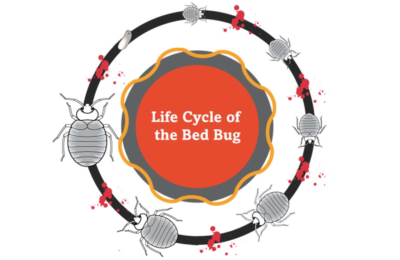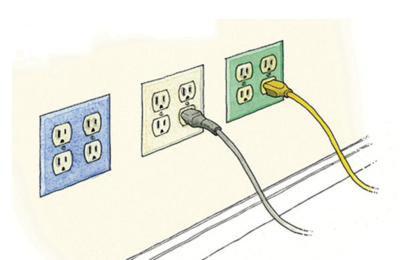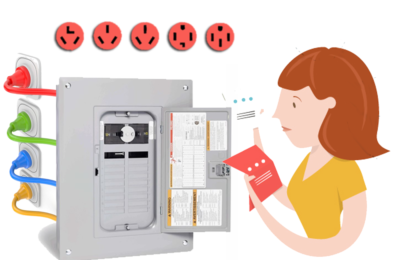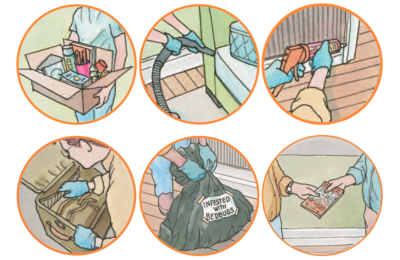Safety Practices
Let us help you. You may be able to find an answer for your question by viewing the FAQ page. Otherwise, please let us know how we can help you by filling out the inquiry form.

If you are looking for more information on the subject matter covered here, many resources are available on the resources page for download:
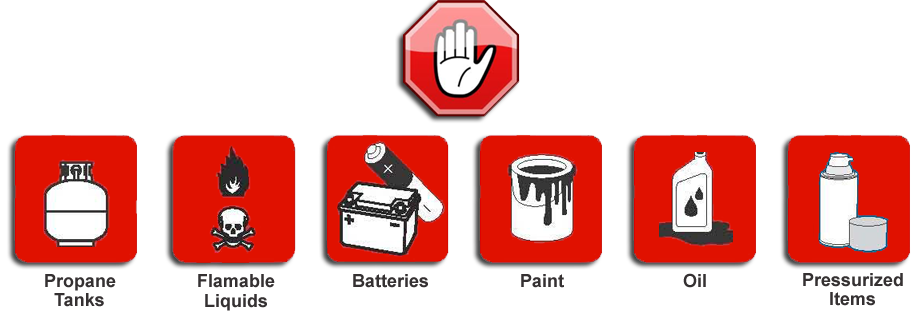
Remove anything that is flammable or potentially explosive

A ground fault circuit interrupter (GFCI) is a device that shuts off an electric power circuit when it detects that current is flowing along an unintended path. Use a GFCI receptacle for the heater main input that powers the controls. In that case, if anything goes wrong, the GFCI will shut down the heater.
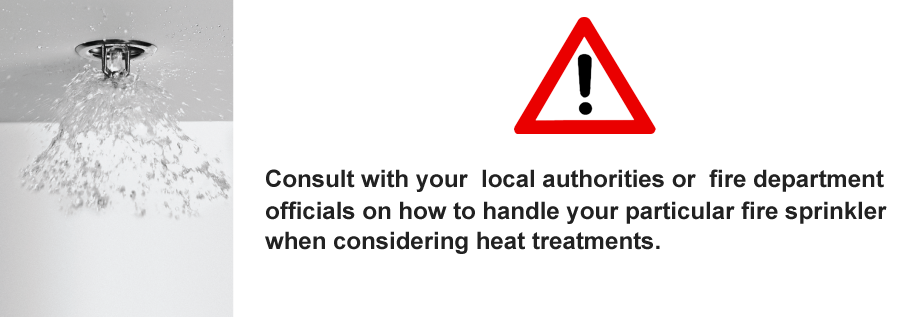
Not taking proper precautions prior to and during a heat treatment can result in activations of sprinkler systems or alarms.

Keep anything that can burn at least three feet away from the heater. Plug heaters directly into a wall outlet. Do not use any extension cord or power strip that do not come with the heater. They could overheat and result in a fire.
Health and Safety Precautions
There are a few things that you will want to do to reduce safety concerns; these things are explored further below:- You should make sure that you remove anything that is flammable or potentially explosive from the home before the heating treatment begins. This includes things like gasoline, propane canisters, and the like. If you do not, you risk an explosion and a house fire. You should also remove all pressurized items – lighters, hairspray, fire extinguishers etc.
Remove all flammables
Use GFCI for main power
Handle Alarms & Sprinklers
- You should Keep the air inlet & outlet of heater(s) clear of any obstructions and loose material. Vacuum or sweep up dust/pet hair as they are hazardous to the heater(s) once they are agitated by the heat system.
- You should unplug all electronics.
- Make sure heater's heating elements are all on separate circuits. Do not plug any other electrical devices into the same outlet as the heater.
- Use a ground fault circuit interrupter (GFCI) receptacle for the heater main input that powers the controls. In that case, if anything goes wrong, the GFCI will shut down the heater.
- You should place heater(s) so that the air is being immediately swept up by the fans and the hot air coming directly out of the heater is not directly hitting any furniture or building materials before being blown about by the fans.
- Sprinkler heads have varying degrees of sensitivity and regulations regarding them. Fire suppression systems should always be taken seriously. Not taking proper precautions prior to and during a heat treatment can result in activations of sprinkler systems or alarms. We recommend consulting with your local authorities or fire department officials on how to handle your particular system when considering heat treatments. While sprinkler head covers are available in the marketplace, they may not be sufficient or may violate local fire codes.
- The temperature controller allows remote monitoring of heating process from out side of the treatment area. It is important to note that you should not, under any circumstances, be in the treatment area while the heating process is going on. Your family and all pets must exit the building. You should also wait a safe amount of time before entering the home after the process is over for the home to cool down.
- Keep anything that can burn at least three feet away from the heater.
- Plug heaters directly into a wall outlet. Do not use any extension cord or power strip that do not come with the heater. They could overheat and result in a fire.
More training resources
See all
Bed bugs belong to a family of insects called Cimicidae. All members of this…
Basic residential wiring, how circuit breakers work and more.
Help you select the right heat treatment package based on your budget and needs.
Best practices for setting up heat treatment equipment


